Do acrylic nails yourself
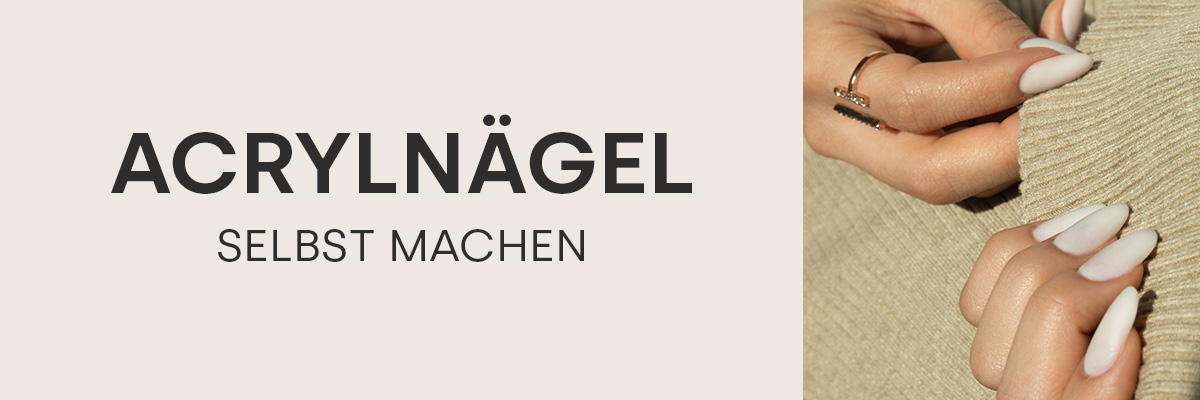

For strong and well-groomed nails, you usually visit a professional nail salon. Thanks to high-quality products, the acrylic technique can now also be used at home. However, nail extensions with acrylic require some practice with the material.
And if you get stuck, just give us a call on 06105-406780 or send us an e-mail to [email protected]. Our trained staff will be happy to help you with any questions you may have about nail design.
What are acrylic nails made of?
Acrylic nails consist of a mixture of acrylic powder and acrylic hardener, the so-called liquid. A small ball is formed from the powder and liquid using a brush and used for nail modeling. Unlike gel, the mixture simply dries in the air and hardens.
For an optimal shape of the modeled nail, you can bend the curve with a pinch stick and a pinch clamp before the material is completely dry. Once the acrylic has been sculpted, the fingernail is filed into the correct shape and polished with the polishing file.
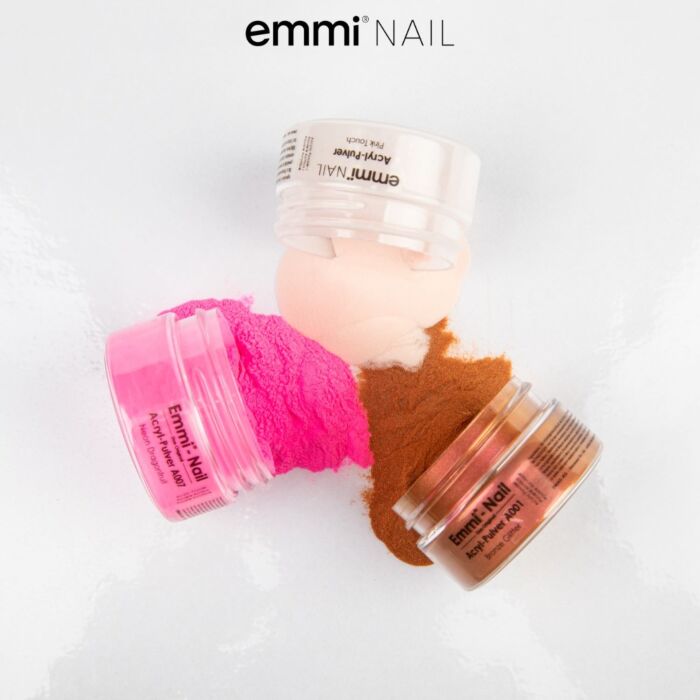

How do I make acrylic nails?
If you want to strengthen or lengthen your nails with acrylic, you can use ready-mixed acrylic gel or powder and liquid. In contrast to gel, the correct mixing ratio is important here. In addition, the acrylic mixture dries in the air, so you cannot take as much time for the modeling as when curing under the UV device. The brush is dipped into the liquid and dabbed a little on a cell. Then use the damp brush to form a small ball in the powder which is used for further modeling. The instructions show the application for classic French nail design:
- Prepare the nail as usual: Push back the cuticle, file the nail into shape and roughen it. Apply the stencil and make sure there is no gap between the paper and the natural nail.
- Extend the nail bed with pink camouflage powder and work out the smile line before applying the white tip.
- Dock white powder directly onto the pre-formed smile line. Make sure that the material is flush but does not overlap. For an unusual look, why not try our strong color acrylic?
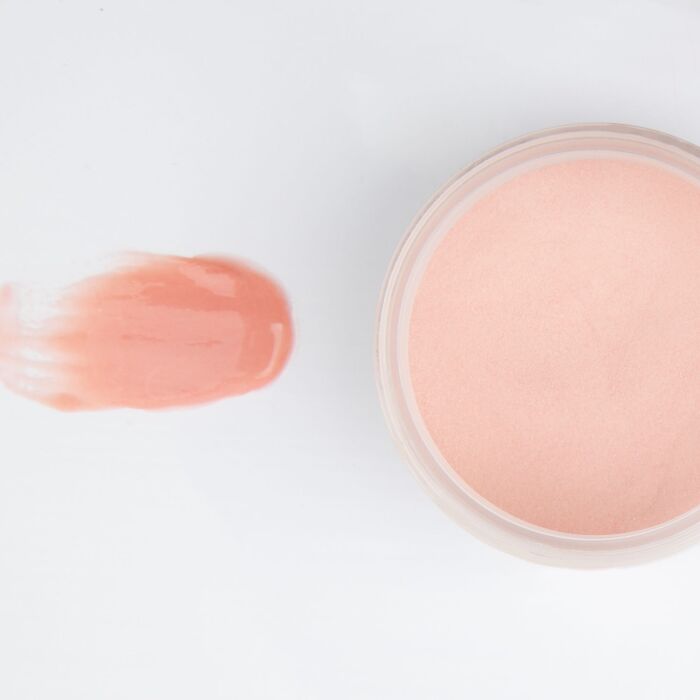

- Model the structure in the stress area, i.e. the C-curve, with transparent pink. Finish the tunnel with a pinch clamp.
- File the free nail end and the surface into shape with a 180-grit file. Repeat with a 240 file.
- Polish the nails to a high gloss with a buffer and polishing file. Switch to finer and finer grits until the nails shine like glass.
- For strong lifts, the additional use of primer on the natural nail is advisable. It creates an adhesive film on the natural nail and reduces greasing of the nail. Apply sparingly to the cuticle area. The primer must not get onto the cuticle, otherwise it will cause adhesion problems.
- In our practical starter set, we have put together everything you need to get started with acrylic modeling.
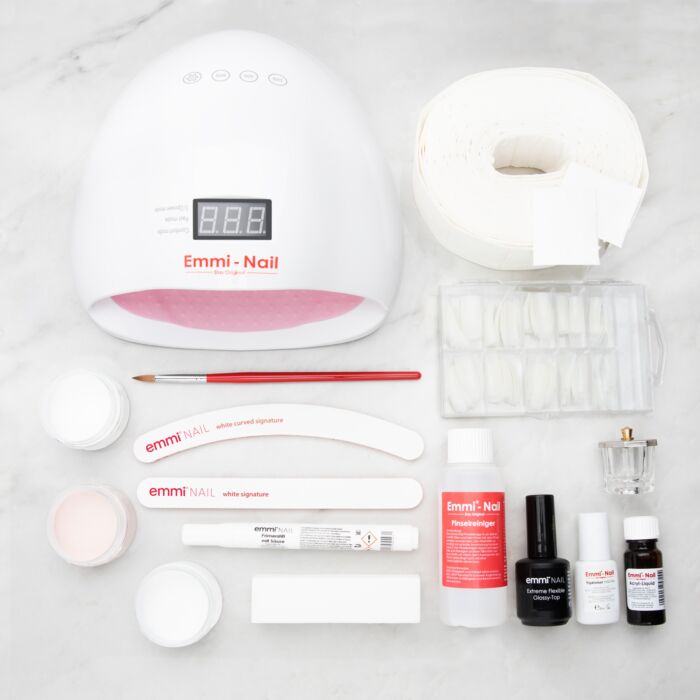

Which nail design is suitable for acrylic nails?
Acrylic nails are stable and extremely robust. Thanks to the powder and liquid system, you can easily dose the amount of material applied to the nail yourself. Acrylic powder is therefore suitable for extremely long and extravagant nails, for a light nail extension suitable for everyday use and for a thin natural nail enhancement that is barely noticeable.
The design chosen for acrylic nails depends largely on the nail shape and length desired by the customer.
- Long nails such as ballerina or stiletto nails offer plenty of space. Nail paintings and color gradients, such as the trendy ombré look, come into their own here. Of course, you can also decorate long nails simply with nail art rhinestones or small stamping tendrils. This is and remains a matter of taste.


- For those who prefer short and subtle nails, delicate colors with the color gels from emmi®NAIL are the first choice. You can also give your nail enhancements a subtly elegant nail design in no time at all with the super spreadable UV polishes.
Why not try the emmi®NAIL color acrylic? This allows you to create the structure and design in one step. Depending on your mood, the nail is then simply sealed with glitter or matt sealant or decorated with stickers and tattoos beforehand.
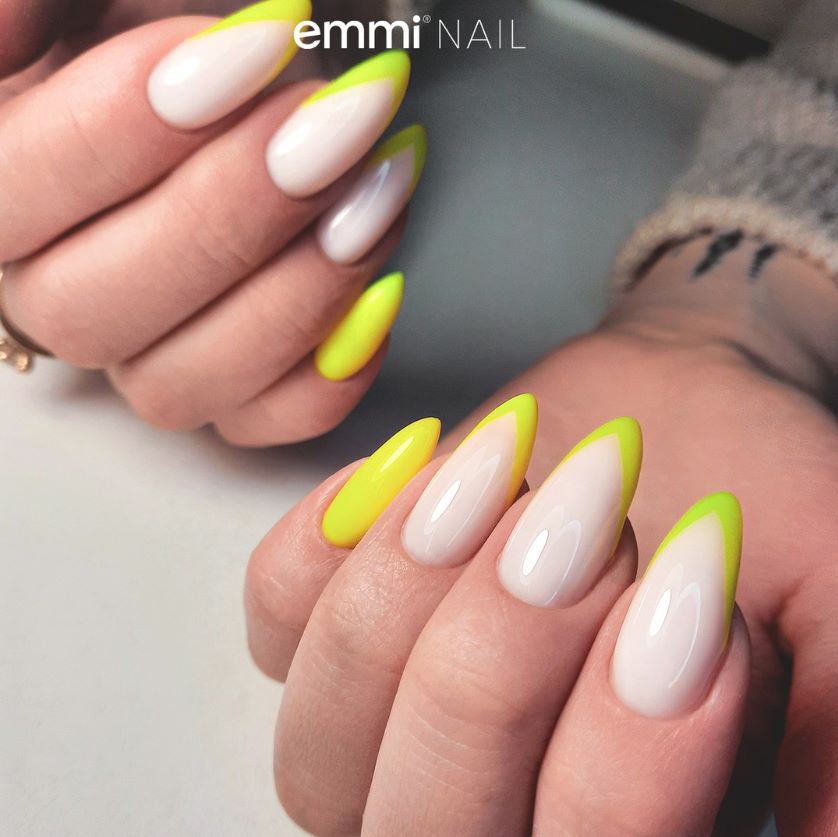

How do I remove acrylic nails?
In contrast to nail gel, acrylic nails are extremely hard and therefore difficult to file off. It takes a relatively long time with a conventional hand file. We recommend using an electric cutter with the appropriate bit attachments to remove acrylic nails.
You can choose from different shapes, grits and materials for the cutter heads. At emmi®NAIL you will even find small, round grinding heads for removing cuticles before modeling. The purchase of a nail cutter is therefore not only worthwhile for acrylic nails. You can use it to complete any filing work in the nail salon or at home perfectly and effortlessly.
You won't want to give it back when filing gel refills, tip transitions and smoothing the build-up layer. We recommend training by a professional nail designer at the Emmi Academy before use. This is because when working with the electric file, fast and high revolutions of the cutter heads are used. Incorrect handling can cause considerable damage to the sensitive nail plate and nail bed.
How do acrylic nails work?
Acrylic nails require some practice, but can be modeled quite easily after training or with good instructions. We have already prepared a short step-by-step guide for you.
To make it even easier for you, we have a detailed video tutorial on acrylic powder nail art.
Acrylic nails video tutorial
Quality Made-In-Germany
At emmi®NAIL, quality comes first. Especially when it comes to acrylic powders and liquids, high-quality and safe ingredients are essential.
They not only ensure the health of nail designers and studio customers, but also your success. You can find the complete range of nail products and accessories for the nail salon in our online store.
Order now conveniently and on account and let our products convince you. As a salon customer, you also benefit from great price advantages and promotions.




